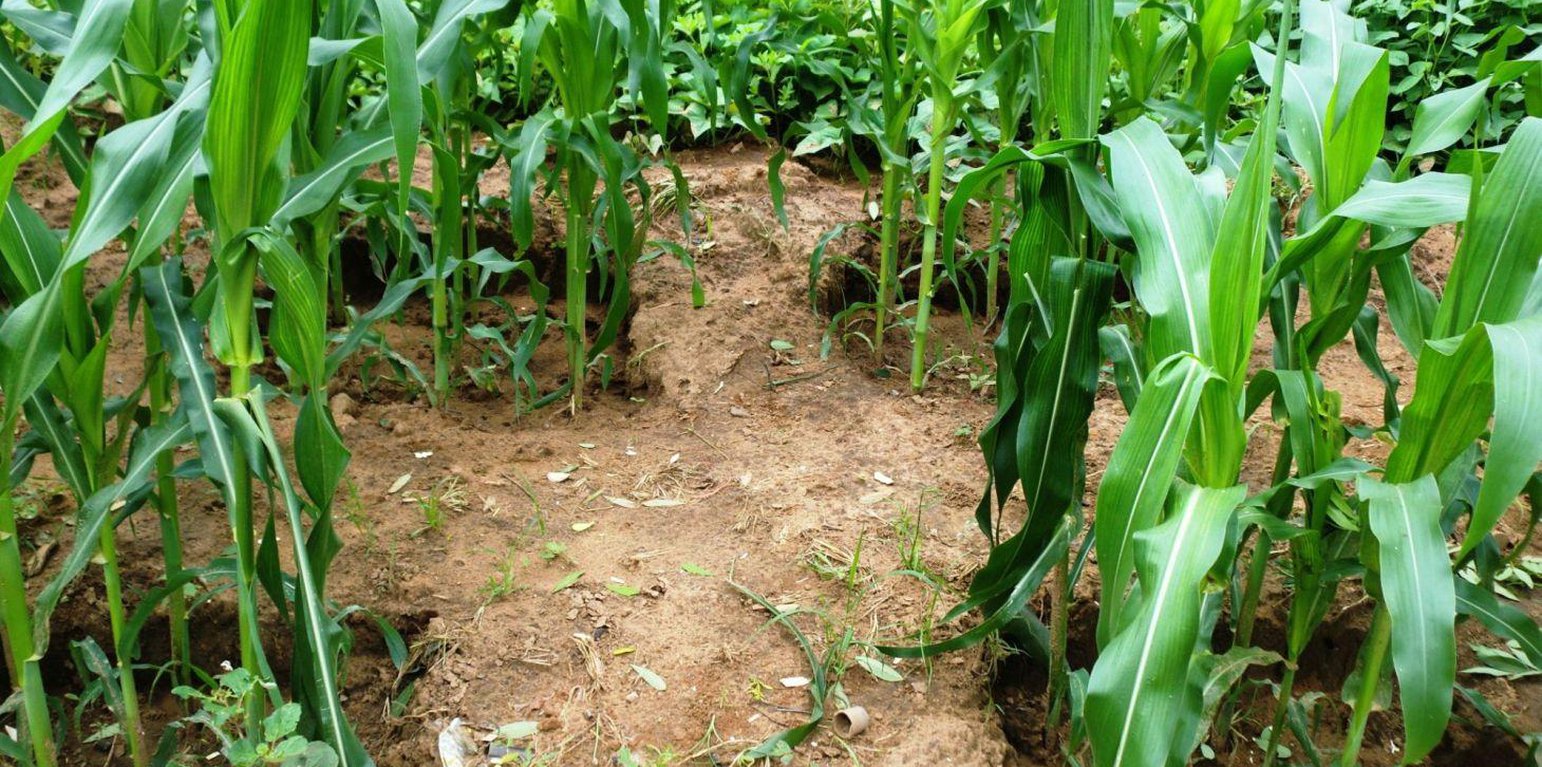



Maize pits commonly referred as zai is a traditional land rehabilitation technology “invented” to rehabilitate degraded dry lands and to restore soil fertility to the benefit of farmers living there.They are made on land which is not very permeable so that runoff can be collected. Improvements in the traditional pits by the addition of organic matter (compost) have resulted in dramatic improvements in yield. The planting pits are suitable for semi-arid area like the lower Mbeere District to enable crops to survive dry spells. They are used on a wide variety soil types but most suitable on silt and clay soils where runoff can be generated due to limited permeability.
Purpose of the Technology: Apart from establishment of a nine maize crop stand in one pit, the technology assists in harvesting rain water, conserving the moisture, managing of soil fertility and controlling of weed development. Use of this technique in Mbeere South District have produced higher grain yields, particularly on highly degraded sandy soils. They offers a good potential to both increase the livelihood of the rural population and at the same time, combat desertification.
Establishment / maintenance activities and inputs: The process is started in dry season of the year. Holes of 2ft by 2ft and 2ft deep are dug out. Remove the top soil and put it on the uphill side. Remove the subsoil and place it down hill to form a continuous bund from end to end of each row. The top soil is returned into the pit and mixed with animal manure at the rate of 1 debe per hole. Plant 9 maize seeds on the pit at a spacing of 1foot. The compost can be made from rotted cow/sheep dung, leaves, and ashes from wood-fueled stoves.
Natural / human environment: These maize pits are usually constructed on abandoned or unused ground. Thus, crop yields resulting from this practice bring a benefit of 100%.

Location: Mbere South District, Eastern Province, Kenya
No. of Technology sites analysed:
Spread of the Technology: evenly spread over an area (approx. < 0.1 km2 (10 ha))
In a permanently protected area?:
Date of implementation: 10-50 years ago
Type of introduction




| Specify input | Unit | Quantity | Costs per Unit (KSh) | Total costs per input (KSh) | % of costs borne by land users |
| Labour | |||||
| Labour | ha | 1.0 | 24.0 | 24.0 | 100.0 |
| Equipment | |||||
| Tools | ha | 1.0 | 15.0 | 15.0 | 100.0 |
| Plant material | |||||
| Seeds | ha | 1.0 | 12.0 | 12.0 | 100.0 |
| Fertilizers and biocides | |||||
| Manure (FYM) | ha | 1.0 | 50.0 | 50.0 | 100.0 |
| Total costs for establishment of the Technology | 101.0 | ||||
| Total costs for establishment of the Technology in USD | 1.01 | ||||
| Specify input | Unit | Quantity | Costs per Unit (KSh) | Total costs per input (KSh) | % of costs borne by land users |
| Labour | |||||
| Labour (weeding) | ha | 1.0 | 24.0 | 24.0 | 100.0 |
| Equipment | |||||
| Tools | ha | 1.0 | 15.0 | 15.0 | 100.0 |
| Total costs for maintenance of the Technology | 39.0 | ||||
| Total costs for maintenance of the Technology in USD | 0.39 | ||||
Machinery
High manpower to dig the pits